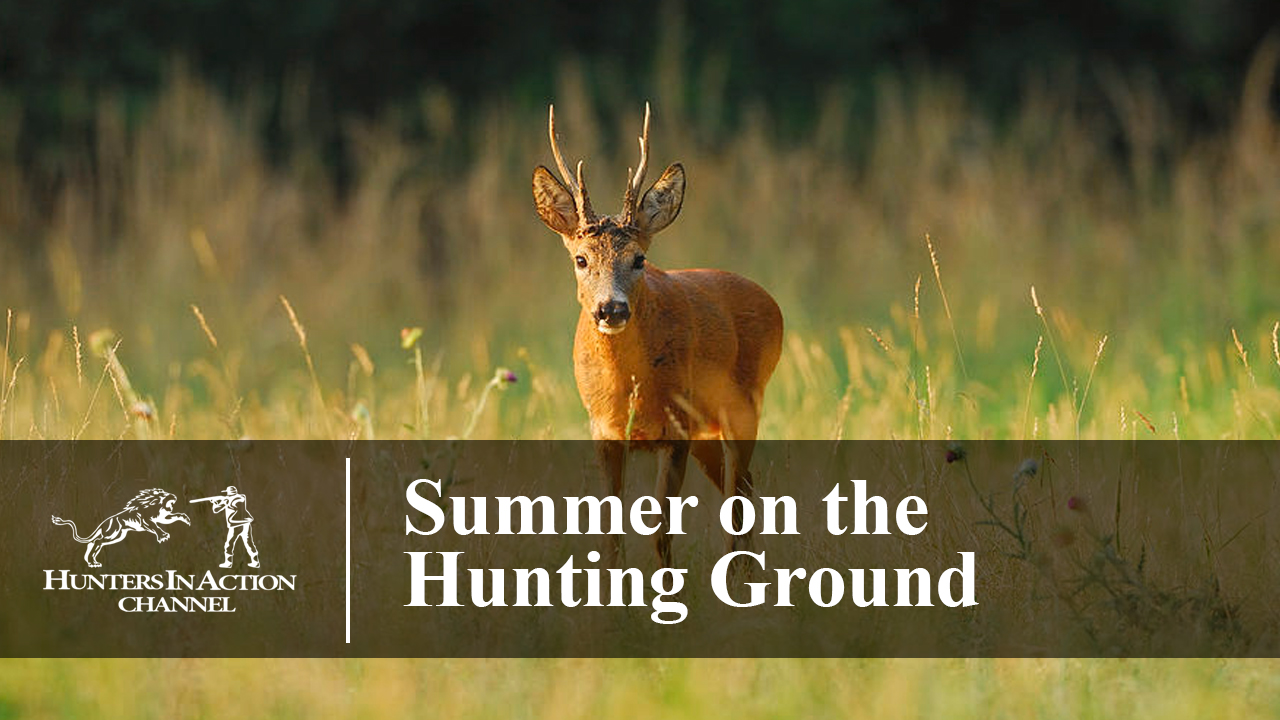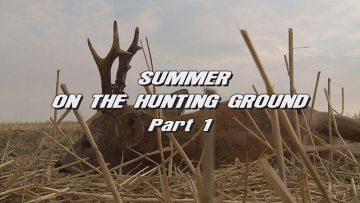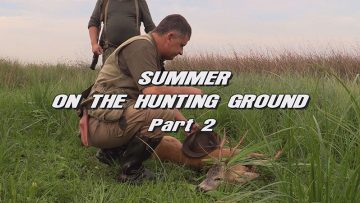Roe deer gladly chooses huge rape-fields blooming in May as its daytime habitat. In the endless yellow waving sea of plants often reaching waist-height game rightly feels safe because of the thick cover. Under these circumstances it is an almost impossible task to spot the hiding shootable buck for even the most sharp-eyed and experienced hunter.
Besides roe deer wild boar and red deer also prefers the safety provided by rape-fields. There is no chance to take a boar because of the high vegetation but the curiously peeping out red deer heads can sometimes provide the opportunity for a shot. However before shooting one must be very careful not to bring down a hind leading its calf. The hind can be distinguished from the jinnock by its much longer head and bigger ears but this requires a huge amount of practice.
Most of the summer hunts consist of game damage prevention during which the hunters try to keep away game from agricutural areas by shooting them. The biggest damage in sunflower is caused by red deer. At this time game preferably bites off the flower bud at the end of the stem which will be the head of the plant. So there will be no harvestable crop on that plant for sure. It is easy to imagine what a huge amount of damage a red deer herd of 20-30 can cause during a single night until they all fill their stomachs with the buds of tiny sunflowers.
The amount of damage is even more eye-catching in the areas closer to the forest, the so-called crossing zone.
Corn is one of our mostly game-damaged crops. Directly after sowing wild boar likes to root up treated seeds. Later the leaves of growing young plants are mostly chewed back by red and roe deer.
Hunters have little chance to protect those fields where the first row of corn is planted directly next to the forest edge. Game is in the cover of corn right after it steps out of the forest. So the hunter has very little time to do the judging.
The situation of the game manager is much easier when there is a broader path or riding cut between the crop field and the forest. In this case there is usually enough time for pondering and that shameful error for hunters can be avoided to shoot a hind with a calf or a sow with pigs.
To the end of July red deer stags are starting to reach the end of antler production. At this time they consume great amounts of legumes and grasses rich in minerals and protein which are needed for the process. The antler growth of older stags stops within a few weeks under the sensitive velvet-cover and they start to clean the antlers so that their knight’s weapon is ready for the beginning of the bell in September.
Roe bucks can be seen more and more often with does and with the rise of testosterone levels their territorial behaviour increases a well. The marking with left-behind scent traces and continuous escorting of does is a clear sign of the beginning rut.
To the second half of July constantly waning crop fields provide more and more opportunities to observe the starting roe deer rut.
Competition between bucks for the territory is getting more and more serious and the winner follows its doe more and more desperately.
On a calm warm summer night with full moon both stalking or stand hunting for wild boar is a fantastic hunting experience. Hidden by darkness, wild boar moves bolder in open areas as well. However careful older and more experienced animals avoid too bright parts enlightened by the moon and try to stay in the shadow all times. But younger sows, yearlings and pigs focus unsuspectedly on foraging. So if the hunter endures overnight stays sufficiently and can withstand the harrasment of mosquitoes he can rightfully hope for a tasty summer boar roast.
Summer means rich hunting grounds for the fox as well. There is no shortcoming of rodents, amphibians, mollusks and insects either at this time.
The predator can often be seen at dawn, late afternoon or in the evening and although the total eradication of the fox population of an area cannot be the goal of a hunter, the presented opportunity is not to be missed to constantly reduce their number and to keep it low.
Thanks to its excellent adaptation the golden jackal unfortunately conquers larger and larger areas in hungarian hunting grounds. Parallel to the constant growth of the domestic population their damage caused in big and small game is increasing as well. Because of its rhapsodic movement, intermittent presence and its cautiousness, bringing it down is not an easy task. If rare luck brings the main robber of the area within range the hunter cannot miss.
In Hungary the main rutting season of roe deer falls typically between the last week of July and the first week of August. Bucks controlled by the instinct of reproduction try to show their dominance over the territory with anxious scraping, antler scrubbing and the smell of their urine.
They constantly patrol the territory looking for the scent of does exhibiting estrus where they follow the found trail like a pointing dog.
They tenaciously chase the doe until it finally stops for the more and more vehemently courting buck.
During the short period of actual estrus lasting for only one and a half, two days, mating happens several times and after the buck has completed its task it sets off to look for another doe exhibiting estrus. Dominant bucks protect their supremacy very desperately and agressively. If the power play of scraping is not enough they do not even shy away from bloody fights.
During this time the hunters keen on roe deer calling visit the hunting grounds in high numbers in order to toll some bucks giddy from love with the help of calls mimicing doe or fawn sounds.








